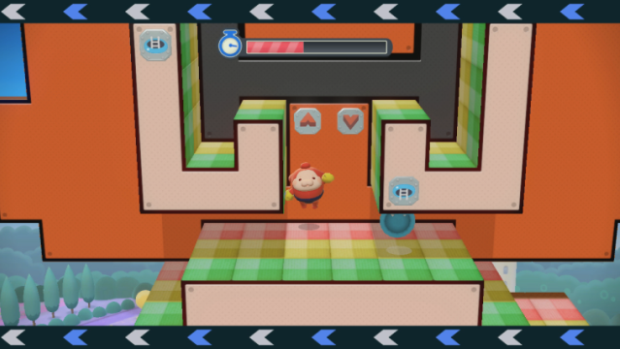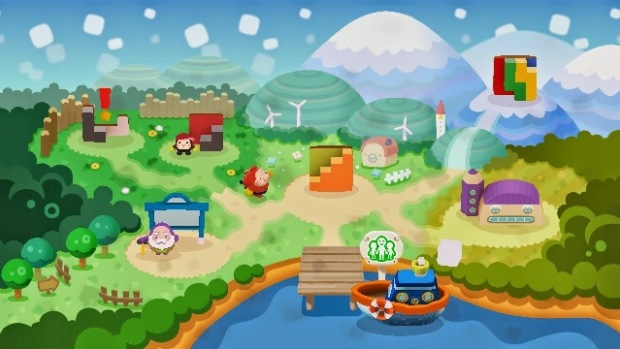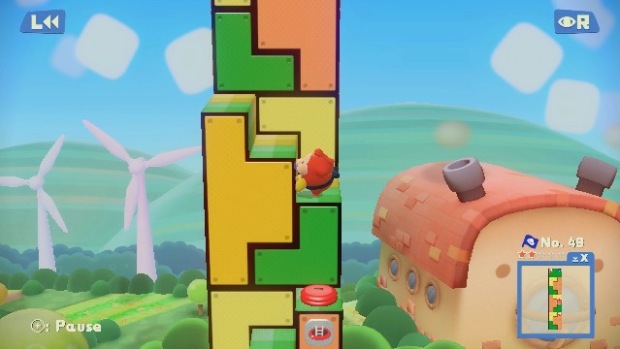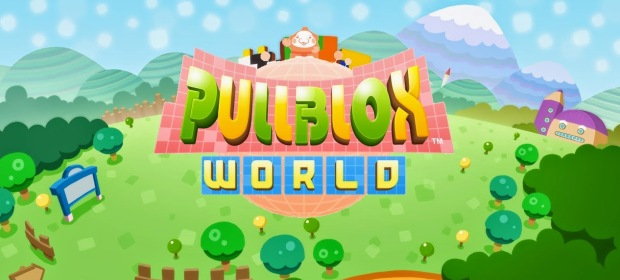The premise of Pullblox World is pretty simple, but it disguises a fiendish heart. A group of children has gotten lost in a series of puzzles in Pullblox Park, and it’s down to you to free them. You do this by reaching the top of each puzzle, pushing and pulling blocks to create platforms to climb.
The challenge comes from the constraints Pullblox World sets. Each block can be pulled out up to three times from the background, and you can only pull them out if you have room to stand on the level below whilst doing so: so if the level below is two out, then you can only pull out a block to one depth. Pulling a block also moves all connected blocks of the same colour. It means that rather than just a single cube, you have to deal with pieces that can stretch off the screen, requiring forward planning.

To help you do this there is an overview mapped to the right trigger and a rewind function on the left. At first I didn’t see the point of the latter – there’s a reset button in front of the puzzle – but on later levels it’s a godsend for when you miss a jump and fall to the start, as you often have to block your way back up to progress higher, which would cause a total restart.
All of which should be easy – and at the start it is, the first 30 levels rarely caused me to pause – but Pullblox World ramps up the difficulty when it starts adding gadgets. These take the form of buttons that move in or push out blocks of a certain colour across the level, requiring a study of the overall puzzle before pressing in case they will make other areas inaccessible. There are also ladder pipes that move you between two entrances once they’ve been uncovered. The combinations these create can be dizzying, massive puzzles that take a lot of thought before starting, and a lot of trial and error.
Despite the difficulty, though, Pullblox World is rather forgiving. As well as the rewind feature, which has an incredibly generous timespan, there is also a skip button that allows you to progress to the next puzzle with no penalty. It prevents frustration, though I never found myself having to use it.

There are other distractions outside of the main series of puzzles. There’s a practise area where can familiarise yourself with the mechanics of the game, alongside an area where you can create and share your own Pullblox creations. It’ll add longevity to a game where you can race through the majority of puzzles, although there are so many in the main campaign that they’ll be replayable.
The levels themselves are nicely designed; early on they are just shapes, but as you progress you come across a boat, a fish and even some Nintendo themed stages for a bit of fan service.
The target audience is a little vague however. The visuals are cutesy and cartoony – it feels like you’re playing a Teletubbies (are they still a thing?) game at times – with music to match. Clearly this is all aimed at kids, and that’s fine, but while it starts simply, it does get quite hard as you progress, and I can’t imagine children being able to do some of the later levels. I guess this makes the rewind and skip functions more relevant, but even with them I think Pullblox may be too hard.

There’s also the matter of slightly woolly controls. While the puzzle element is obviously the main aspect of the game, there is some platforming skill required, but the jump controls don’t offer much precision. It’s a small niggle, and something the rewind feature negates, but it shouldn’t be there at all.
VERDICT: If you’re in the market for a little puzzler for your Wii U, Pullblox is for you. The amount of content straight out of the box, as well as the potential for thousands of player made levels, means you’ll get value for money. The simplicity of the concept also means that anyone can pick it up and play, although later levels may get a bit too much for younger children.

VERY GOOD. An 8/10 is only awarded to a game we consider truly worthy of your hard-earned cash. This game is only held back by a smattering of minor or middling issues and comes highly recommended.
Review code provided by publisher.





